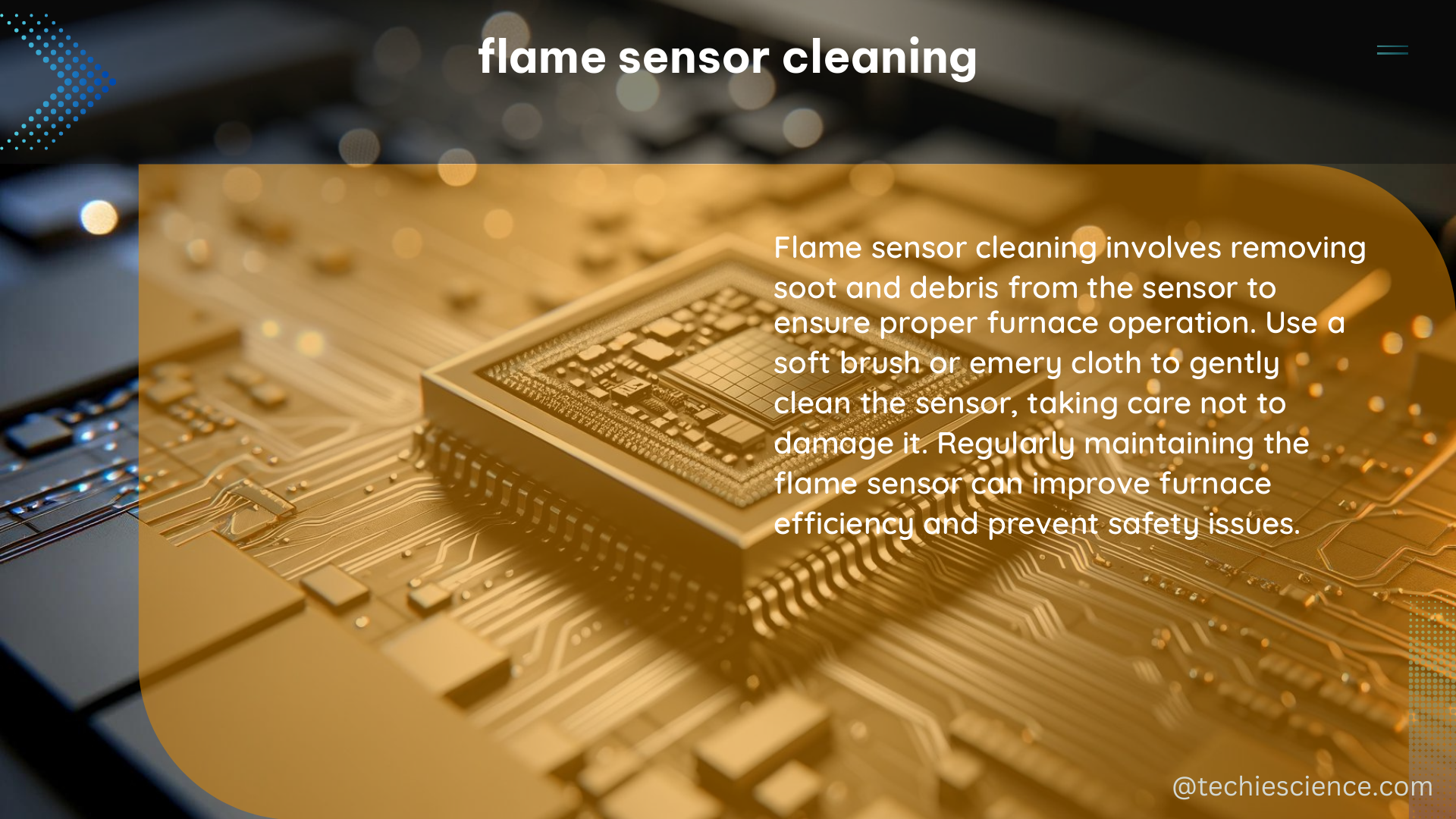Flame sensors are critical components in heating systems, responsible for detecting the presence of a flame and ensuring the safe operation of the system. Proper maintenance and cleaning of flame sensors are essential to maintain their optimal performance, as dirt, corrosion, and other contaminants can hinder their ability to sense flames accurately. This comprehensive guide will provide you with a detailed, step-by-step approach to cleaning flame sensors, along with technical specifications and best practices to ensure the safe and efficient operation of your heating system.
Understanding Flame Sensor Functionality
Flame sensors work by detecting the presence of a flame through a process called flame rectification. When a flame is present, the sensor generates a small electrical current, typically between 2 to 5 microamps (DC), which is used by the control system to confirm the presence of a flame. If the flame sensor fails to detect a flame or the current is below the recommended range, the control system will shut off the gas supply to prevent a potentially dangerous situation.
Measuring Flame Signal

To accurately assess the condition of a flame sensor, it is crucial to measure the flame signal using a meter capable of measuring microamps. This specialized meter will provide a precise reading of the current generated by the flame sensor, allowing you to determine if the sensor is functioning within the recommended range.
Flame Sensor Current Range
The flame sensor should typically generate a current between 2 to 5 microamps (DC) when the flame is established and stable. If the reading is below 5 microamps, it is likely that the flame sensor is dirty and in need of cleaning.
Measuring Procedure
- Turn off the power supply to the heating system to ensure safety.
- Locate the flame sensor, which is typically a rod-shaped component near the burners.
- Disconnect the wire connected to the flame sensor.
- Set your microamp meter to the appropriate range and connect it in series with the flame sensor.
- Turn on the power supply and observe the flame signal reading.
- Record the measured value for comparison after cleaning the flame sensor.
Cleaning Flame Sensors
Proper cleaning of flame sensors is essential to maintain their optimal performance. Follow these steps to clean the flame sensor:
- Turn off the power supply to the heating system to ensure safety.
- Locate the flame sensor, which is typically a rod-shaped component near the burners.
- Disconnect the wire connected to the flame sensor.
- Use a 3M Scotchbrite pad or fine-grit steel wool to gently clean the surface of the flame sensor. Avoid using heavy-grit sandpaper or emery cloth, as these can damage the sensor’s coating and cause it to get dirty faster.
- Ensure that the flame sensor is cool to the touch during the cleaning process to prevent melting the cleaning pad and leaving residue on the flame rod.
- Reconnect the wire to the flame sensor.
- Turn on the power supply to the heating system.
- Measure the flame signal using a microamp meter to verify the improvement in the signal.
- If the flame signal is still below the recommended range, repeat the cleaning process.
Troubleshooting and Replacement
If the flame sensor still does not generate the required current after multiple cleaning attempts, it may need to be replaced. Factors that may require flame sensor replacement include:
- Broken or damaged insulator
- Excessive scratches or damage to the flame rod due to improper cleaning methods
- Corrosion or wear over time
When replacing a flame sensor, ensure that the new component is compatible with your heating system and follow the manufacturer’s installation instructions carefully.
Technical Specifications
Tools Required:
– 3M Scotchbrite pad or fine-grit steel wool
– Microamp meter capable of measuring 2 to 5 microamps (DC)
Flame Sensor Current Range:
– 2 to 5 microamps (DC) when the flame is established and stable
Cleaning Procedure:
1. Disconnect the wire connected to the flame sensor.
2. Clean the flame sensor with a 3M Scotchbrite pad or fine-grit steel wool.
3. Reconnect the wire to the flame sensor.
Measurement Procedure:
1. Connect the microamp meter in series with the flame sensor.
2. Measure the flame signal while the system is operational.
Conclusion
Maintaining the cleanliness of flame sensors is crucial for the safe and efficient operation of your heating system. By following the detailed steps and technical specifications outlined in this guide, you can effectively clean and troubleshoot your flame sensors, ensuring optimal performance and prolonging the lifespan of your heating equipment.
References
- Measuring Flame Signal and Cleaning Flame Sensors | Deppmann. (2017-02-17). Retrieved from https://www.deppmann.com/blog/service-tip-of-the-month/measuring-flame-signal-cleaning-flame-sensors/
- flame sensors – HVAC-Talk: Heating, Air & Refrigeration Discussion. (2021-03-06). Retrieved from https://hvac-talk.com/vbb/threads/79306-flame-sensors
- Testing Flame Rectification in Heating Systems – Cole-Parmer. (2022-09-14). Retrieved from https://www.coleparmer.com/tech-article/testing-flame-rectification

The lambdageeks.com Core SME Team is a group of experienced subject matter experts from diverse scientific and technical fields including Physics, Chemistry, Technology,Electronics & Electrical Engineering, Automotive, Mechanical Engineering. Our team collaborates to create high-quality, well-researched articles on a wide range of science and technology topics for the lambdageeks.com website.
All Our Senior SME are having more than 7 Years of experience in the respective fields . They are either Working Industry Professionals or assocaited With different Universities. Refer Our Authors Page to get to know About our Core SMEs.